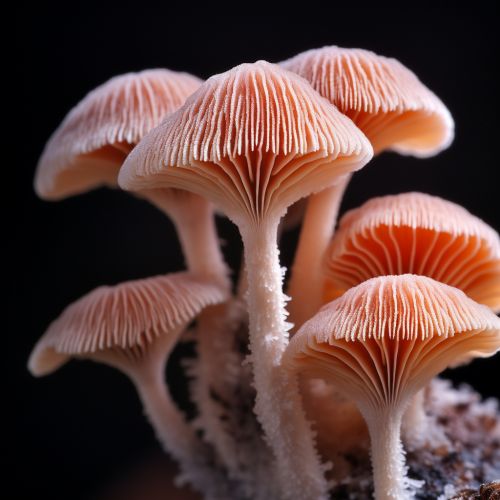Agaricomycetes
Classification
Agaricomycetes is a class of fungi in the phylum Basidiomycota. The taxon is roughly synonymous with the obsolete term Hymenomycetes (mushrooms). In terms of species count, Agaricomycetes is the largest class of Basidiomycota, and it includes a wide variety of different species. The class encompasses not only the true mushrooms, but also many fungi that are ecologically important as wood-decay fungi, mycorrhizal fungi, and as pathogens of plants and animals.


Morphology
Agaricomycetes are characterized by having a spore-bearing structure—a basidiocarp—that is large enough to be seen with the naked eye. The basidiocarp is typically what we think of as a mushroom, with a stalk (stipe) and a cap (pileus) that bears the spore-producing gills (lamellae). However, not all Agaricomycetes produce this type of fruiting body. Some produce simpler structures, such as crusts, puffballs, or brackets.
Life Cycle
The life cycle of Agaricomycetes is characterized by the alternation of two distinct phases: the haploid phase, which produces the spores, and the dikaryotic phase, which produces the basidiocarp. The transition between these two phases is controlled by mating type genes that ensure outcrossing and genetic diversity.
Ecology
Agaricomycetes play a crucial role in the ecosystem as decomposers, breaking down organic matter and returning nutrients to the soil. Many species form mutualistic relationships with plants, known as mycorrhizae, where the fungus helps the plant absorb nutrients and water from the soil, and in return, the plant provides the fungus with sugars and other organic compounds.
Economic Importance
Agaricomycetes include many species of economic importance. Some, like the button mushroom Agaricus bisporus, are cultivated for food. Others, like the shiitake Lentinula edodes, are not only eaten but also used in traditional medicine. However, some Agaricomycetes are harmful, causing diseases in plants and animals, including humans.
Taxonomy
The class Agaricomycetes is divided into several orders, including Agaricales, Polyporales, and Russulales. These orders are further divided into families, genera, and species. The taxonomy of Agaricomycetes is complex and constantly changing as new molecular data become available.
